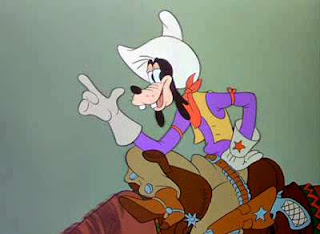Creating a Wonderful Life
Last night I subjected Judy to schmaltzy Christmas Classic, It’s a Wonderful Life (what can I say, I’m a big ol’ softie at heart). You know the one: Frank Capra’s fairy tale for middle-aged men, in which gee-willikers nice guy George Bailey is rescued from the brink of suicide when an angel shows what life would be like without him.
What always impresses me, though, is that the plot above doesn’t happen until the last third of the movie. The first hour and a half is spent on backstory: who is George Bailey, and how did he get so low? Really, the movie is a 90-minute tragedy, followed by a 30-minute comedy.
It amazes me that Capra gets away with this — hard to imagine a director pulling it off today. But the film only works because of that 90 minutes. As, time and again, George defers his dreams of world travel and big-time success for other obligations, we feel his pain and frustration. It’s the tragic half of the movie that makes George so relatable.
But if George is a tragic hero, then what’s his tragic flaw? His dreams. I know, that’s strange to say in America, the land of “dreaming big” and lassoing the moon. But his dream, after all, is what haunts him throughout the movie, and taints his life story with that bitter aftertaste of failure.
One of my favorite scenes is when he and Mary are helping the Martini christen their new home, and George’s face falls when his old foil Sam Wainwright shows up. George, stuck in his “crummy little town,” watches jealously as Sam and his wife (and her furs) are spirited off to Florida in a chauffeur-driven limo to live the life that George has always wanted.
Watching it this time, I thought about another of my favorite reads this year, Victor Strecher’s Life on Purpose. This brilliantly engaging, touching, funny, inspirational little book combines ancient philosophy and contemporary science to show how having a strong, driving purpose in life is the key to health (physical as well as mental), longevity, and happiness. Stretcher guides the reader through the process of finding and creating a purpose, and gives ideas on how to best pursue it. My recommendation: if you plan to make a New Year’s resolution, read this book first.
How does this connect to poor ol’ George Bailey? Was his purpose — travel and success — so bad in and of itself? No. But as Strecher points out, your purpose must first and foremost align with your values. Time and again, George’s actions speak louder than his words: he values his father, his brother, his family, the Building and Loan, and the people of his community. (It’s worth noting that the final stop on Clarence’s tour is when he realizes that Bailey Park — his life’s work and his father's legacy — has been replaced by a cemetery, with his brother as the prime resident. This, more than his Ma running a boarding house or Mary becoming an old-maid librarian, pushes him to declare, “I wanna live again.”)
The tragedy of George Bailey’s life isn’t that he fails to achieve his dream. It’s that he’s spent so long with his eyes on the wrong prize, he fails to recognize what he has accomplished. By putting aside his childhood dream, he’s saved lives, helped his family, and made an indelible mark on his community.
In this Facebook era, there are a lot of Sam Wainwrights out there, hee-hawing at us day and night. Plenty of big houses, amazing vacations, high GPAs, big accomplishments… It’s enough to destroy your mental (and even physical!) health. Our loved ones are out there, and it's wonderful to celebrate their lives. But it's also important to avoid the comparison trap. I think that purpose can probably help us here -- keep us from chasing the things that, while great for someone else, might not be right for us. In other words, it may just be that creating (and remembering) your purpose will help keep bring you back to earth, just as it did George Bailey




Comments
Post a Comment